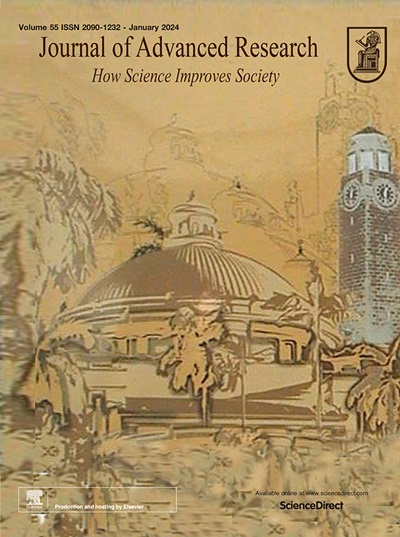Plasma proteomics identifies S100A8/A9 as a novel biomarker and therapeutic target for fulminant myocarditis
IF 11.4
1区 综合性期刊
Q1 MULTIDISCIPLINARY SCIENCES
引用次数: 0
Abstract
Introduction
Fulminant myocarditis (FM) is a lethal inflammatory myocardial disease characterized by rapid progression and poor prognosis. Investigating plasma proteins linked to FM may elucidate underlying pathological mechanisms, identify novel biomarkers for early detection in high-risk populations, and advance the development of targeted therapeutic strategies.Objectives
This study aimed to investigate the proteomic profiles of FM patients and identify potential biomarkers and therapeutic targets, focusing on S100A8/S100A9.Methods
We conducted a comprehensive proteomic analysis of an extensive plasma sample collection derived from FM patients across three clinical cohorts. Our approach included screening for proteins correlated with cardiac dysfunction and disease severity. Key findings were validated in an independent cohort. In parallel, we employed a CVB3-induced FM mouse model to evaluate the expression of these biomarkers in myocardial tissue and assess the effects of targeted interventions. Specifically, we investigated the therapeutic impacts of blocking the S100A8/A9 heterodimer using the inhibitor ABR-238901.Results
The analysis revealed significant innate immune activation and severe metabolic disturbances in FM patients. Through proteomic profiling and correlation analysis, proteins S100A8 and S100A9 emerged as significant biomarkers linked to cardiac dysfunction and FM severity. S100A8/A9 heterodimer was validated as a crucial diagnostic marker for FM, with elevated plasma levels correlating with increased rates of cardiac death, heart transplantation, and hospitalizations due to heart failure or myocarditis. In CVB3-induced FM mouse models, myocardial tissues showed increased levels of S100A8 and S100A9. Treatment with ABR-238901 significantly reduced mortality by alleviating acute inflammation and improving cardiac function.Conclusion
S100A8/A9 emerged as an essential biomarker and a promising therapeutic target for FM. These findings offer new insights into FM diagnosis and suggest potential intervention strategies. These results pave the way for further research to validate the clinical application of S100A8/A9-targeted therapies, potentially improving outcomes for patients suffering from this severe cardiac condition.Trial registration: ClinicalTrials.gov NCT03268642.

血浆蛋白质组学鉴定S100A8/A9为暴发性心肌炎的新型生物标志物和治疗靶点
暴发性心肌炎(FM)是一种进展迅速、预后差的致死性炎症性心肌疾病。研究与FM相关的血浆蛋白可以阐明潜在的病理机制,为高危人群的早期检测找到新的生物标志物,并促进靶向治疗策略的发展。目的以S100A8/S100A9为研究对象,研究FM患者的蛋白质组学特征,寻找潜在的生物标志物和治疗靶点。方法:我们对来自三个临床队列的FM患者的大量血浆样本进行了全面的蛋白质组学分析。我们的方法包括筛选与心功能障碍和疾病严重程度相关的蛋白质。主要发现在独立队列中得到验证。同时,我们采用cvb3诱导的FM小鼠模型来评估这些生物标志物在心肌组织中的表达,并评估靶向干预的效果。具体来说,我们研究了使用抑制剂ABR-238901阻断S100A8/A9异源二聚体的治疗效果。结果分析显示FM患者存在明显的先天免疫激活和严重的代谢紊乱。通过蛋白质组学分析和相关分析,S100A8和S100A9蛋白成为与心功能障碍和FM严重程度相关的重要生物标志物。S100A8/A9异源二聚体被证实是FM的关键诊断标志物,其血浆水平升高与心脏死亡、心脏移植和心力衰竭或心肌炎引起的住院率增加相关。在cvb3诱导的FM小鼠模型中,心肌组织显示S100A8和S100A9水平升高。ABR-238901治疗通过缓解急性炎症和改善心功能显著降低死亡率。结论s100a8 /A9是一种重要的生物标志物,也是一种有前景的FM治疗靶点。这些发现为FM诊断提供了新的见解,并提出了潜在的干预策略。这些结果为进一步研究验证S100A8/ a9靶向治疗的临床应用铺平了道路,可能改善患有这种严重心脏病的患者的预后。试验注册:ClinicalTrials.gov NCT03268642。
本文章由计算机程序翻译,如有差异,请以英文原文为准。
求助全文
约1分钟内获得全文
求助全文
来源期刊

Journal of Advanced Research
Multidisciplinary-Multidisciplinary
CiteScore
21.60
自引率
0.90%
发文量
280
审稿时长
12 weeks
期刊介绍:
Journal of Advanced Research (J. Adv. Res.) is an applied/natural sciences, peer-reviewed journal that focuses on interdisciplinary research. The journal aims to contribute to applied research and knowledge worldwide through the publication of original and high-quality research articles in the fields of Medicine, Pharmaceutical Sciences, Dentistry, Physical Therapy, Veterinary Medicine, and Basic and Biological Sciences.
The following abstracting and indexing services cover the Journal of Advanced Research: PubMed/Medline, Essential Science Indicators, Web of Science, Scopus, PubMed Central, PubMed, Science Citation Index Expanded, Directory of Open Access Journals (DOAJ), and INSPEC.
 求助内容:
求助内容: 应助结果提醒方式:
应助结果提醒方式:


